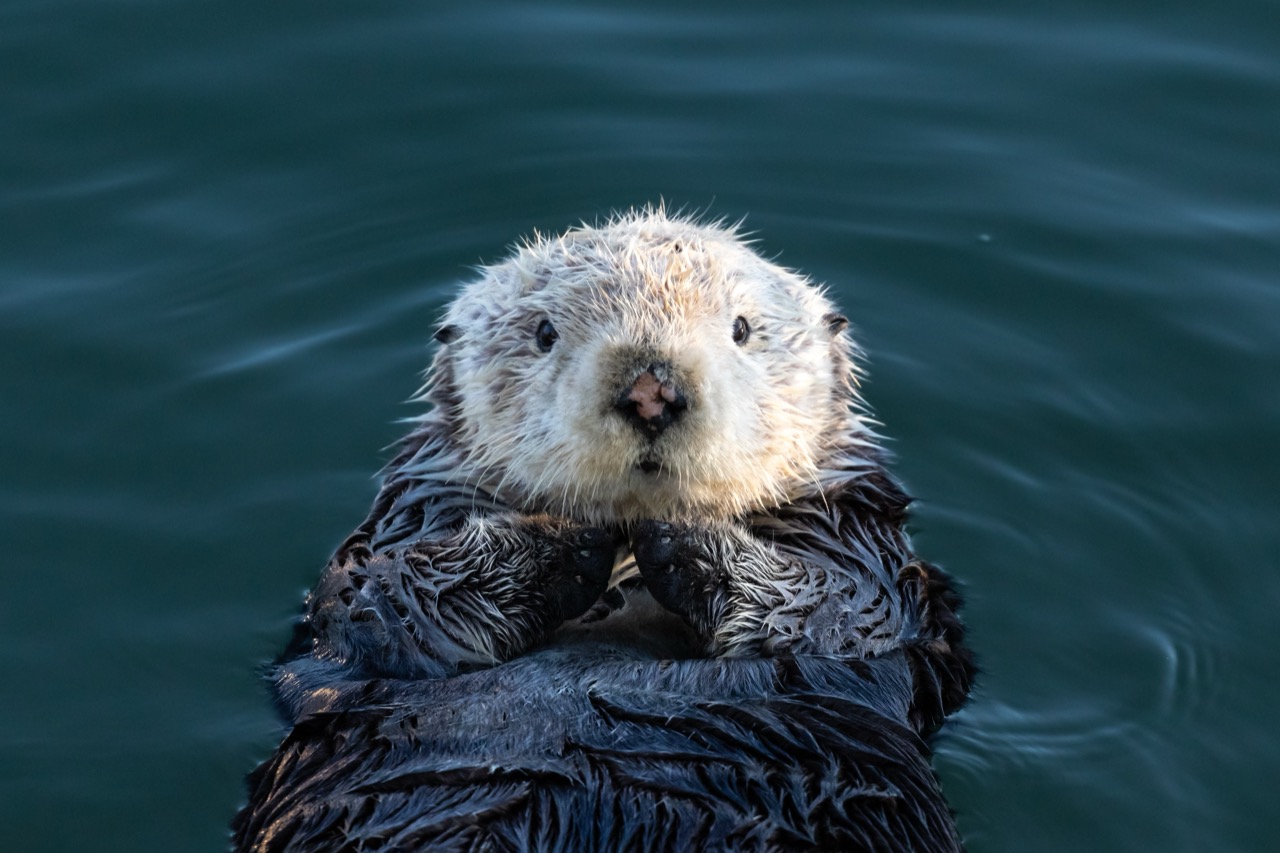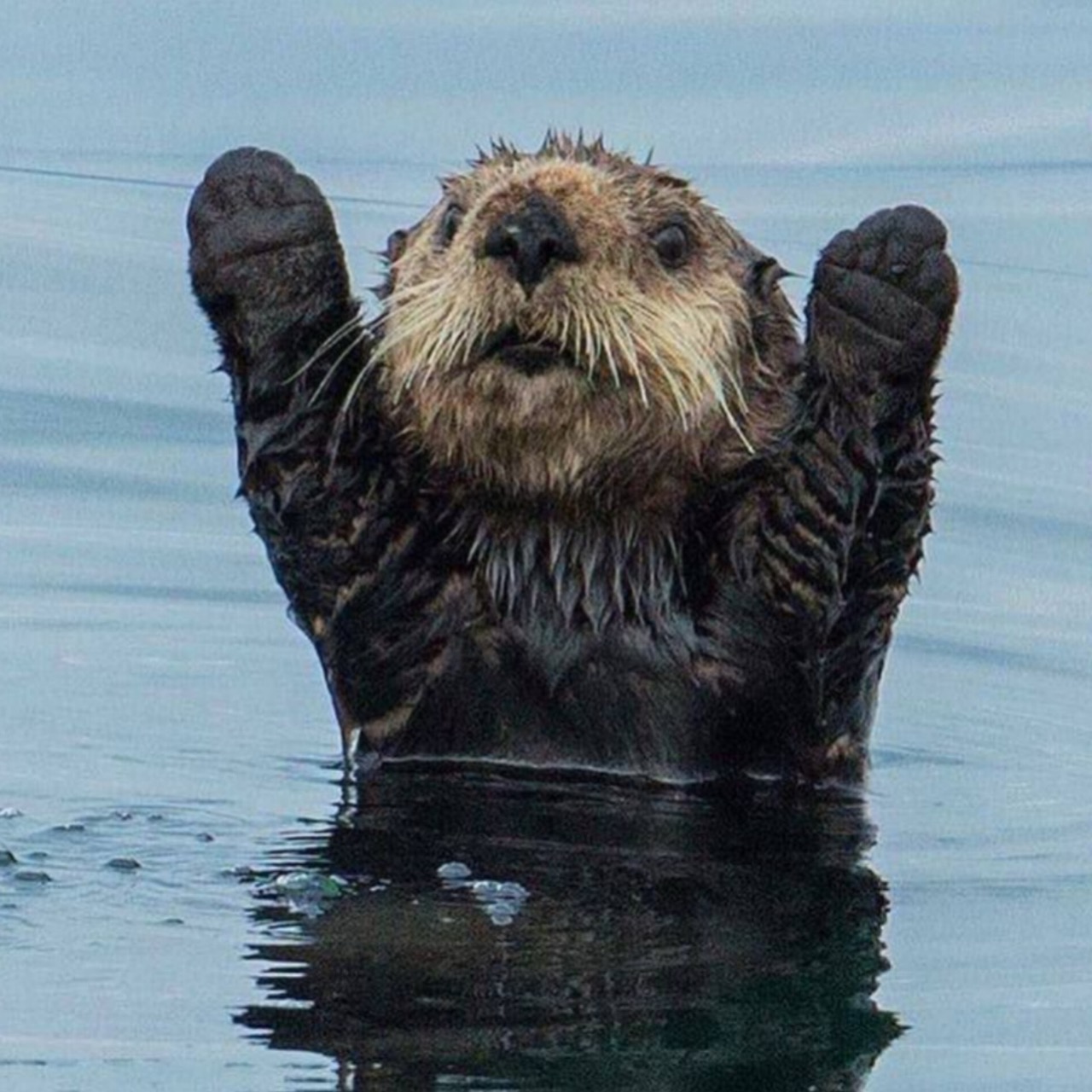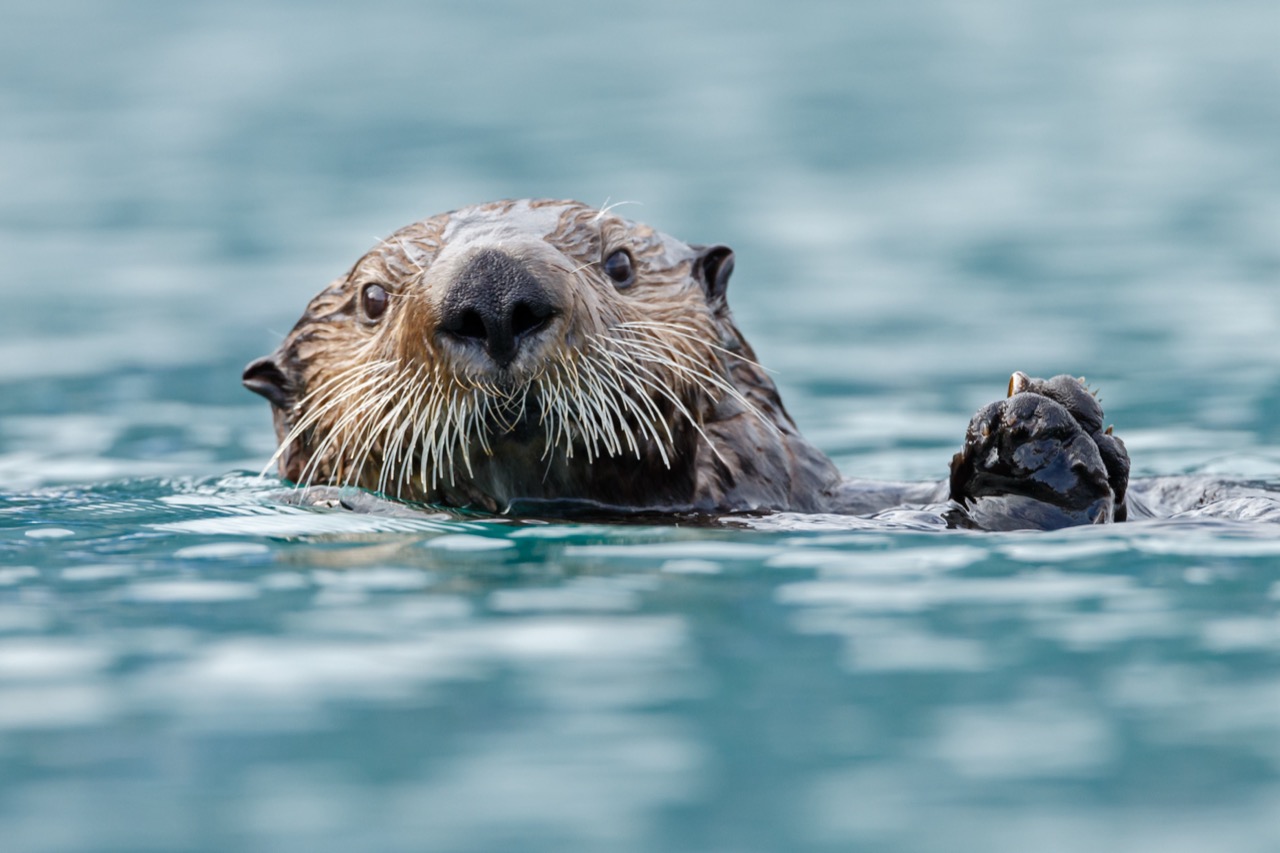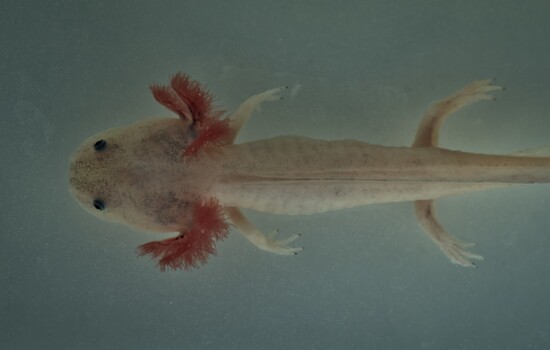The Sea Otter: An Aquatic Marvel of Fur and Frolic

Amidst the rolling waves and kelp forests of the Pacific, a creature of unmatched playfulness and ingenuity thrives, painting a picture of life in the ocean that is both enchanting and profound. The sea otter, with its expressive eyes and an insatiable curiosity, embodies the spirit of the marine world like no other. Often seen floating on its back, cracking open shellfish with a stone, the sea otter's existence is a testament to the marvels of evolution and the complex tapestry of ocean life. Before we dive deeper into the swirling waters of their world, here's a captivating piece of trivia: sea otters have the densest fur in the animal kingdom, with up to 1 million hair follicles per square inch, a feature that keeps them warm in the chilly Pacific waters without the need for blubber.

Origins: A Tale of Evolution
The story of the sea otter is a saga that spans millions of years, tracing back to the Miocene epoch when their ancestors roamed the shores and seas. Part of the Mustelidae family, which includes weasels, badgers, and minks, sea otters evolved to fully embrace a life aquatic. Their journey through time has seen them adapt to the challenges of the ocean, developing unique traits that allow them to thrive in this vast, fluid environment. From their dense fur to their webbed feet and powerful tails, every aspect of their being has been sculpted by the demands of their salty realm.
The Aquatic Acrobat: Physical Characteristics
Observing a sea otter, one is immediately struck by its playful demeanor and physical adaptations that make it a master of the marine domain. Weighing between 14 to 45 kilograms (30 to 99 pounds) and measuring up to 4 feet in length, sea otters are the heaviest members of the weasel family but are among the smallest marine mammals. Their bodies are streamlined for aquatic life, with a robust tail for steering and webbed feet for propulsion. The absence of blubber makes their dense fur crucial for insulation, a characteristic that has unfortunately made them a target for fur traders in the past.
A Coastal Realm: Habitat
Sea otters inhabit the coastal waters of the northern Pacific, from the Russian Far East to Alaska, down the coast of California, and even to the shores of Japan. They are particularly fond of the kelp forest ecosystem, where the dense underwater forests provide ample food, shelter, and anchor points for resting. These areas, rich in biodiversity, are crucial not only for the otters' survival but also for the health of the marine environment, as sea otters play a vital role in maintaining the balance of these aquatic habitats.
Diners of the Deep: Feeding Habits
The diet of a sea otter is as diverse as the oceanic pantry itself, primarily consisting of shellfish, including sea urchins, clams, crabs, and snails. Their method of foraging is a fascinating display of intelligence and dexterity, as they use rocks to crack open the hard shells of their prey, a rare use of tools among non-human animals. This dietary preference has significant ecological implications, as sea otters help control sea urchin populations, which in turn helps preserve the kelp forests crucial for the health of coastal ecosystems.
The Social Swimmer: Behaviour
Sea otters are social creatures, often seen gathering in groups known as rafts, which can consist of a few individuals to up to a hundred. Within these rafts, otters engage in grooming, resting, and playful activities, showcasing a complex social structure and communication system. Grooming is a vital part of their routine, as it keeps their fur in optimal condition, ensuring its insulating properties are maintained. Play, often seen in the form of sliding down embankments or juggling small stones, is not just a source of joy but also a means of honing skills necessary for survival.
Cycle of Life: Reproduction and Lifespan
The reproductive journey of the sea otter is marked by tenderness and diligence. Females give birth to one pup after a gestation period of about six months, with births occurring throughout the year. The bond between mother and pup is strong, with the mother not only nursing but also teaching the pup to swim and dive for food. This period of dependency lasts for about six months to a year, a crucial time for the pup to learn the skills needed for independent life. In the wild, sea otters can live up to 23 years, though this is less common due to natural predators and human impacts.
Predators and Challenges
Despite their playful nature, sea otters face threats from both natural predators and human activities. Great white sharks, orcas, and bald eagles are among their natural adversaries, posing risks especially to young pups. Human-induced challenges include oil spills, which can devastate otter populations by compromising their fur's insulating ability, leading to hypothermia. Pollution, fishing net entanglement, and habitat destruction further threaten their survival. Conservation efforts are crucial in addressing these challenges, aiming to protect sea otter populations and their habitat.
Conservation: A Path Forward
The conservation of sea otters is a testament to human effort and the resilience of nature. Once on the brink of extinction due to fur trade, their numbers have slowly rebounded, thanks to international protection efforts and dedicated conservation programs. These efforts not only aim to protect sea otters but also to preserve the coastal ecosystems they help maintain. Education and research play vital roles in these endeavors, shedding light on the intricate connections between sea otters and the health of marine environments.
The Cultural Ripple: Sea Otters in Human Culture
Sea otters hold a special place in human culture, symbolizing both the vulnerability and the resilience of nature. They have been featured in the mythology and folklore of coastal indigenous peoples, revered for their playful spirit and seen as messengers of the sea. In modern times, they captivate the public imagination through their presence in aquariums and conservation campaigns, serving as charismatic ambassadors for marine conservation.
Sea otters, with their endearing behaviors and critical ecological role, remind us of the interconnectedness of life and the importance of preserving our planet's natural heritage. As we continue to navigate the challenges of conservation and coexistence, the sea otter stands as a beacon of hope, guiding efforts to protect the delicate balance of marine ecosystems. Through understanding and action, we can ensure that these aquatic marvels continue to thrive, bringing joy and balance to the oceans they call home.








